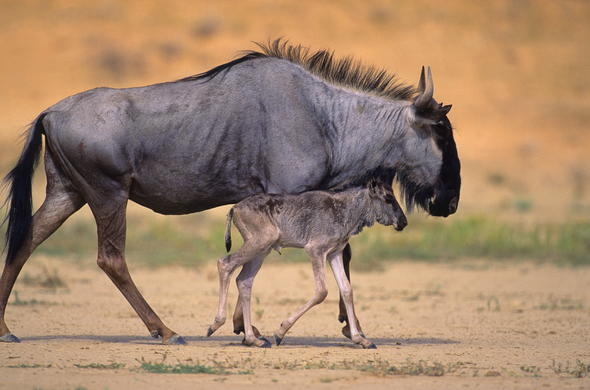Lion vs Leopard
Africa’s wilderness is home to some of the most formidable predators on Earth, with lions (Panthera leo) and leopards (Panthera pardus) reigning as two of the continent’s most iconic big cats. Though both are apex predators, they exhibit striking differences in behavior, ecology, and survival strategies. Understanding these differences not only enhances safari experiences but also underscores the importance of conserving these majestic species in an era of increasing human-wildlife conflict.
Physical Characteristics: Size, Strength, and Camouflage
At first glance, lions and leopards are easily distinguishable. Lions are the larger and more robust of the two, with adult males weighing between 150–250 kg (330–550 lbs) and standing up to 1.2 meters (4 feet) at the shoulder. Their most defining feature is the male’s majestic mane, which signals dominance and health to rivals and potential mates. Lionesses, though maneless, are equally powerful hunters, built for endurance and cooperative takedowns of large prey.
Leopards, on the other hand, are more compact and agile, with males weighing between 60–90 kg (130–200 lbs). Their golden coats, adorned with distinctive black rosettes, provide exceptional camouflage in dense forests, savannahs, and rocky terrain. Unlike lions, leopards are solitary and rely on stealth rather than brute strength, making them one of Africa’s most elusive predators.
Habitat and Range: Where Do They Thrive?
Both species are widely distributed across sub-Saharan Africa, but their habitat preferences differ significantly.
- Lions prefer open grasslands, savannahs, and semi-arid regions where their social structure and cooperative hunting strategies are most effective. Prime lion territories include the Serengeti (Tanzania), Masai Mara (Kenya), and Kruger National Park (South Africa).
- Leopards are far more adaptable, thriving in forests, mountains, riverine woodlands, and even arid deserts. Their ability to climb trees—where they often stash kills away from scavengers—gives them an edge in areas with high competition. Top leopard-spotting destinations include South Luangwa (Zambia), Sabi Sands (South Africa), and the Okavango Delta (Botswana).
Social Structure: Pride vs Solitude
One of the most profound differences between lions and leopards lies in their social behavior.
- Lions are the only truly social big cats, living in prides of up to 30 individuals. A pride typically consists of related lionesses, their cubs, and a coalition of dominant males. This structure enhances cooperative hunting, territorial defense, and cub-rearing.
- Leopards, in stark contrast, are solitary and highly territorial. Males and females only interact during mating, and mothers raise their cubs alone. Their elusive nature makes them harder to track, but their adaptability allows them to survive in human-dominated landscapes where lions often struggle.
Hunting Strategies: Teamwork vs Stealth
Both lions and leopards are apex predators, but their hunting techniques reflect their ecological niches.
- Lions rely on teamwork, with lionesses coordinating to ambush prey such as wildebeest, zebras, and buffalo. Their strength lies in numbers, allowing them to take down large herbivores that a single lion couldn’t overpower alone.
- Leopards are masters of stealth, using dense vegetation and darkness to stalk prey. They are opportunistic hunters, targeting anything from antelope and warthogs to monkeys and even fish. Their ability to drag kills weighing twice their body mass into trees keeps them safe from scavengers like hyenas and rival predators.
Vocalizations: Roars and Rasping Coughs
A lion’s roar is one of the most powerful sounds in the animal kingdom, audible up to 8 km (5 miles) away. This deep, resonant call serves to assert dominance, communicate with pride members, and warn rival males.
Leopards, meanwhile, produce a rasping cough-like call, often mistaken for a sawing sound. They also communicate through growls, hisses, and chuffing noises, particularly during mating or territorial disputes.
Conservation Status: Threats and Survival
Both species face significant threats from habitat loss, human encroachment, and poaching.
- Lions are classified as Vulnerable by the IUCN, with populations declining by 43% over the past two decades (Bauer et al., 2015). Human-lion conflict, particularly retaliatory killings by pastoralists, is a major driver of their decline (Everatt et al., 2019).
- Leopards are also listed as Vulnerable, with some regional populations Critically Endangered. Their solitary nature and adaptability have allowed them to persist in fragmented habitats, but illegal bushmeat hunting and trophy poaching remain severe threats.
Best Places to See Lions and Leopards in the Wild
For those hoping to witness these predators in their natural habitats, here are the top destinations:
- Lions:
- Serengeti National Park (Tanzania)
- Masai Mara National Reserve (Kenya)
- Kruger National Park (South Africa)
- Okavango Delta (Botswana)
- Leopards:
- Sabi Sands Game Reserve (South Africa)
- South Luangwa National Park (Zambia)
- Masai Mara National Reserve (Kenya)
- Moremi Game Reserve (Botswana)
- Samburu National Reserve (Kenya)
Conclusion: The Delicate Balance of Apex Predators
Lions and leopards, though both apex predators, have evolved vastly different strategies for survival. Lions dominate through strength and social cohesion, while leopards thrive on stealth and adaptability. However, both face mounting pressures from human activities, making conservation efforts critical for their future.
By supporting eco-tourism, anti-poaching initiatives, and habitat preservation, we can help ensure that these magnificent cats continue to roam Africa’s wild landscapes for generations to come.
Summary: Lion vs Leopard
Africa’s vast wilderness is home to two of the continent’s most iconic and powerful big cats—the lion and the leopard. These apex predators sit at the top of the food chain, yet their survival strategies, habitats, physical attributes, and behavioral traits differ remarkably, shaping unique ecological roles within their environments. Lions, often referred to as the “kings of the savannah,” are social carnivores that thrive in open grasslands such as the Serengeti and Kruger National Park. With males weighing up to 250 kg and sporting thick manes for intimidation and protection, lions form complex prides that cooperate in hunting, raising cubs, and defending vast territories.
In contrast, leopards are the epitome of stealth and adaptability. Solitary and elusive, leopards prefer forests, rocky outcrops, and even urban fringes like Nairobi National Park, where their rosette-patterned coats provide exceptional camouflage. Weighing between 30 to 90 kg, these agile cats are renowned for their ability to hoist prey several times their body weight into trees—a behavior known as caching, which protects their meals from scavengers. While lions rely on teamwork to bring down larger ungulates like zebras and buffaloes, leopards specialize in ambush tactics, hunting everything from antelope and primates to birds and rodents, making them the most versatile feline predator in Africa.
Territorial behavior further distinguishes these cats. Lions patrol expansive ranges, with males forming coalitions to dominate and breed within prides, whereas leopards mark smaller, overlapping territories using scratch marks, scent spraying, and a distinctive “sawing” call. Socially, lions live in prides averaging 5–15 members, bound by strong female relationships, while leopards remain mostly solitary outside mating or maternal care. Their reproduction cycles also differ: lionesses typically birth 1–6 cubs after a 110-day gestation and raise them communally, whereas leopard mothers give birth to 1–3 cubs and frequently change den sites to evade detection. Mortality is high for both species’ cubs, with threats from predators, infanticide (common in lion prides), and human conflict. Speaking of threats, both lions and leopards are listed as Vulnerable by the IUCN, facing habitat loss, human-wildlife conflict, illegal trade, and declining prey bases due to poaching. Conservation efforts in hotspots like the Greater Limpopo Transfrontier Park and the Congo Basin are critical to their survival.
Ecologically, lions exert top-down control on herbivore populations, creating a “landscape of fear” that shapes prey distribution and vegetation patterns. In contrast, leopards regulate mid-sized predators and contribute to biodiversity through niche partitioning—occupying arboreal and nocturnal roles not filled by other carnivores. Their adaptability has even allowed them to persist in fragmented habitats and climate-impacted zones. Culturally, lions have symbolized royalty and bravery across African and global traditions, appearing in Maasai rites, Egyptian mythology, and modern logos. Leopards, on the other hand, feature as tricksters or powerful spirits in folklore, with their skins used in ceremonial attire and their elusive nature fueling fascination in eco-tourism and conservation documentaries.
For wildlife enthusiasts, some of the best safari destinations to witness these predators in action include the Serengeti and Okavango Delta for lions, and Sabi Sands or South Luangwa for leopards. Early morning and late afternoon game drives increase your chances of sightings—listen for roars in lion territory or look for fresh kills in trees for signs of leopard activity. In conclusion, comparing lions and leopards offers a deep appreciation for Africa’s wildlife diversity. Lions embody the strength of coordinated power, while leopards are masters of stealth and survival. Protecting both species requires proactive conservation strategies, sustainable tourism, and a commitment to preserving Africa’s wild heritage for future generations.
References
- Bauer, H., Chapron, G., Nowell, K., et al. (2015). Lion populations are declining rapidly across Africa, except in intensively managed areas. PNAS.
- Everatt, K.T., et al. (2019). Human-lion conflict and thresholds of coexistence in southern Africa. Global Ecology and Conservation.
Hayward, M.W., & Kerley, G.I.H. (2005). Prey preferences of the lion (Panthera leo). Journal of Zoology.



